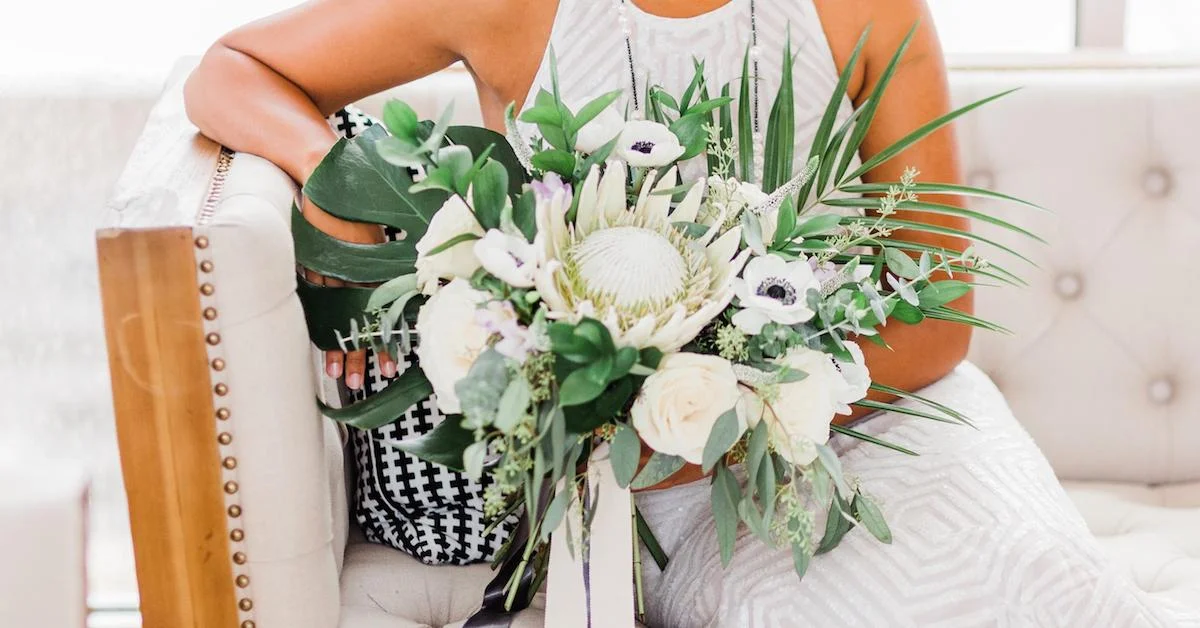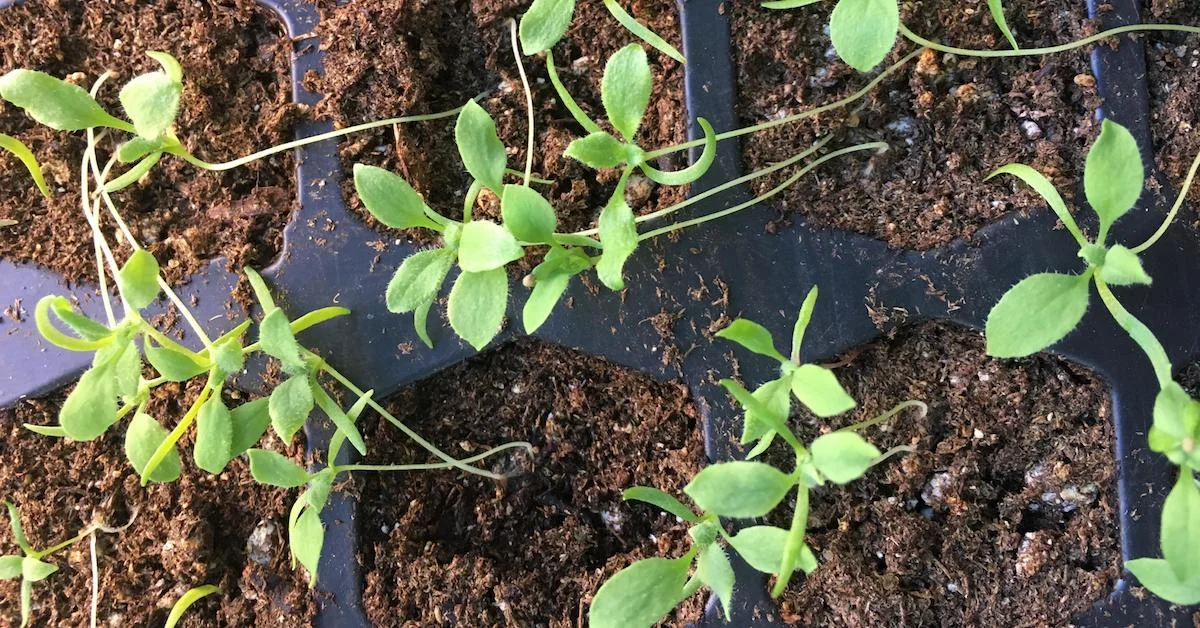Conceptualizing Design for Event Florals
Three Region Photography
Our industry has a bit of a problem with originality, and it’s not entirely our fault. Conceptual design in weddings and florals can be a hard sell when working with clients and colleagues with less design experience. There is inspiration all around us waiting to be harnessed for our next project, but when the time comes to build that mood board, often the first stop is Pinterest to search “______ wedding” or “such and such color palette.” I regularly receive mood boards from other wedding professionals and clients featuring nothing but other weddings and styled photoshoot images. For some people, particularly clients, it can be hard for them to visualize an idea without seeing an image from another wedding, but it shouldn’t be all we present to them.
I spent my college years studying fashion design at the Fashion Institute of Technology in NYC where much of our time was spent developing conceptual design skills. If I had ever had the nerve to include another designer’s piece on a mood board for a collection, I wouldn’t have just received a poor grade - I would have gotten a stern talking to about intellectual property. That certainly does not mean we were not constantly pulling tear sheets from magazines to help develop our ideas; we just had to also present inspiration of our own that was entirely original.
For example, I developed an evening wear collection inspired by the paintings of James Jean as part of my senior portfolio. Prada also has a longstanding relationship with the artist and admittedly it was their collaboration that introduced me to his work. For my work to be truly original, I had to be aware of what Prada had been doing, while also doing my own research into his work, color stories, textiles, and motifs.
Three Region Photography
In fashion, the rules were pretty straightforward. Copying the work of other designers was seen as a major faux pas reserved for the fast fashion mega brands, and not something a serious designer would do. So why isn’t it the same in other areas of design, such as events and floral design?
The short answer? Because we are trying to keep our customers happy. The same customers who also buy their fashion at H&M or Target, rather than Prada or Dior. But if we want to build value in our work as artists and designers, we need to start elevating the work we present to clients.
The Client Consult
When you first meet with a client, they likely are bringing you a Pinterest board full of ideas and images from other weddings, often the same images as the previous five clients you met with. I like to glance through the images quickly, but avoid digging into their board too deeply. I prefer to focus on the client. What is their vibe, their personality, what lights them up? Go beyond the “wedding theme” - at least in the form it is currently defined, which is usually a collection of vague adjectives and colors. To a client just getting started, “Classic Glamour with Blush & Greenery” is a theme. It isn’t their job to be the design expert! It is ours.
On a recent consult, I was presented with the exact “theme” above. I tucked those words in the back of my mind and started asking further questions. It turns out the couple are vegan and love vegetables, including kale & herbs. They also grow plants of their own. Note taken. The bride herself had vibrant magenta hair, which she planned to keep for the wedding as well. Another mental note made.
Through the course of our consult, I learned more about the overall feel of the wedding, the couple themselves, and actual vibe they were going for, which was much more botanical and nature-inspired that the words “classic glamour” ever entailed. The proposal we created included focal elements like ornamental kale with blush and purple accents, herbs like rosemary and mint, and succulents to emphasize the blush blooms.
Three Region Photography
Clients don’t always know what is possible if they haven’t already seen it on the blogs and Pinterest. Build your proposals to showcase new ideas rather than just rehashing the images they sent you in the first place. Do a quick sketch of your plans to demonstrate to them if necessary! (Check out this blog on how to sketch your designs).
Capturing Thematic Elements
Now in the case where the client truly has a theme and wants to pay homage to specific source material, it’s our job to find the color palette, textures, and design elements that reference and imply the theme visually and conceptually.
Theme weddings have a bit of a bad rap for being kitschy, and this is in part because they can be overly literal. The floral designs, while just one element of the overall event design, can significantly elevate the look of a theme wedding by introducing colors, texture, and atmosphere to the event that evokes the theme, without bashing you over the head with it.
I will admit, I am a bit of a nerd, so I love when clients come to me with movie or fandom themes. I also choose to work with such ideas for my own projects pretty regularly. When analyzing a thematic source the first thing to make a note of is the overall vibe. Is it a serious theme, funny theme, whimsical, bold, exciting, adventurous? You will want to keep this in mind as the tether that holds the design together.
Ex. Let’s say we are designing for a Harry Potter themed wedding. I would be keeping words like magical, whimsical, moody, and adventurous in mind as I moved forward with the design.
Three Region Photography
Next thing to consider is the setting or geographic location associated with the theme. What plants and flowers grow there? What botanical elements will help make the theme of the event feel more immersive for the guests?
Ex. Back to my Harry Potter example, I would be looking for floral ingredients that remind me of the English countryside, moody pine forests, and unique or strange looking ingredients that could represent some of the magical plants they reference in the books!
Color is key to conceptual design. Try to pull a full-color palette from your source material rather than just one or two accent colors. Think about colors that are significant or prominent throughout the theme and how best to use them in the florals and decorative elements of the event.
Ex. With Harry Potter, there are so many colors that could be included, but I would personally stick to muted tones evoking the colors of the different Houses such as dark red, goldenrod yellow, forest green, and slate blue, with vintage-inspired gold metallic accents.
Texture and arranging style will also play a role in capturing your theme. If your theme is more polished, high end, and glamorous, then you will likely have a more lush, tailored look to your arrangements. A more whimsical theme will call for movement, texture, and detail. A very modern theme will likely have fewer textures and rely more heavily on pops of colors.
Ex. For my hypothetical Harry Potter Wedding, I would be channeling the off-kilter, mismatched style of Hogwarts and much of the Wizarding World by using garden style arrangements with a lot of textures, depth, and small details.
Three Region Photography
Don’t be afraid to try something new!
These are of course just the basic ways to utilize conceptual design with a theme for floral design. There will be many places within the event design where nods to the theme or themes can be included, but the flowers will play a huge role in tying the whole look together visually.
Remember to always return to the source. Avoid the temptation to simply look at what other designers have done with the theme until you have had some time to formulate your own ideas, color palette, and design concept. Enjoy designing with the theme, and don’t be afraid to try something new.











